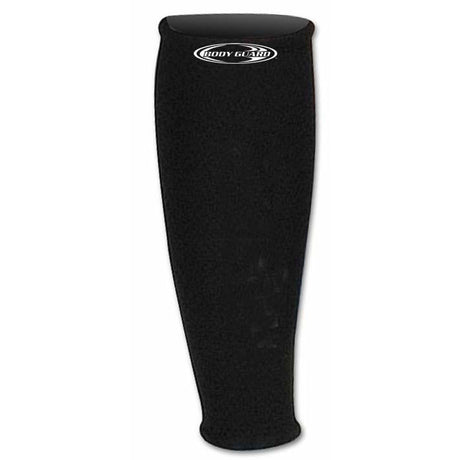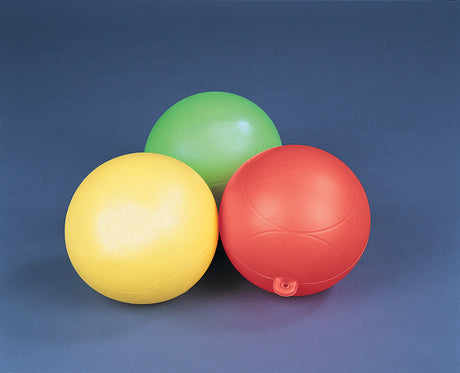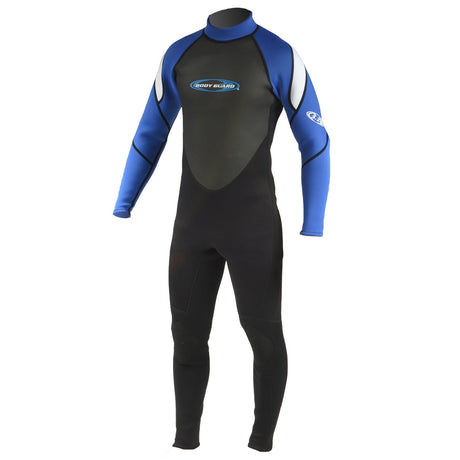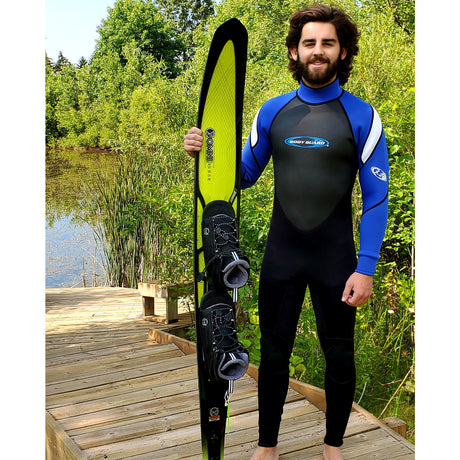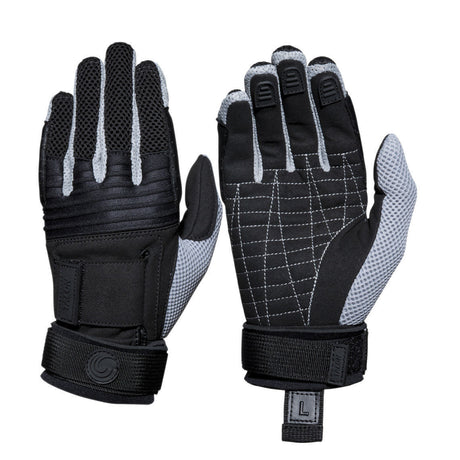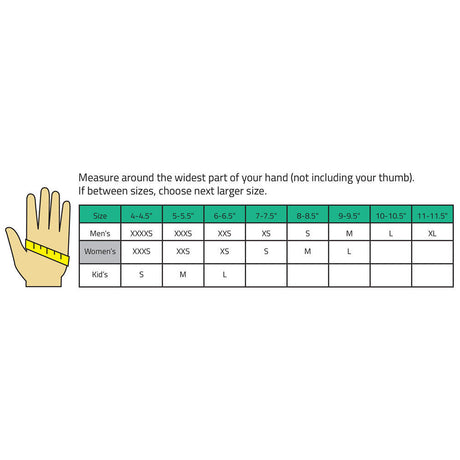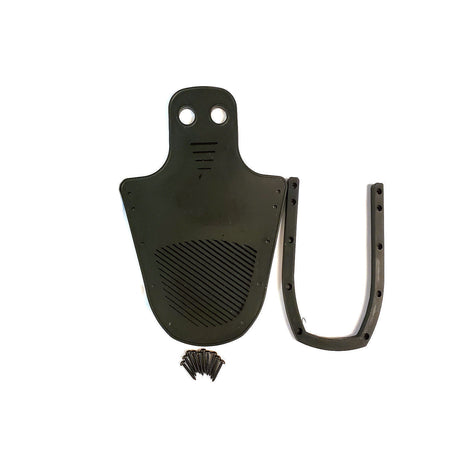Want to get your kids on the water with an easy-to-ride board? Not ready for water skis or wakeboards? Kneeboards are the perfect, beginner-friendly way to get into towed watersports.
What is Kneeboarding?
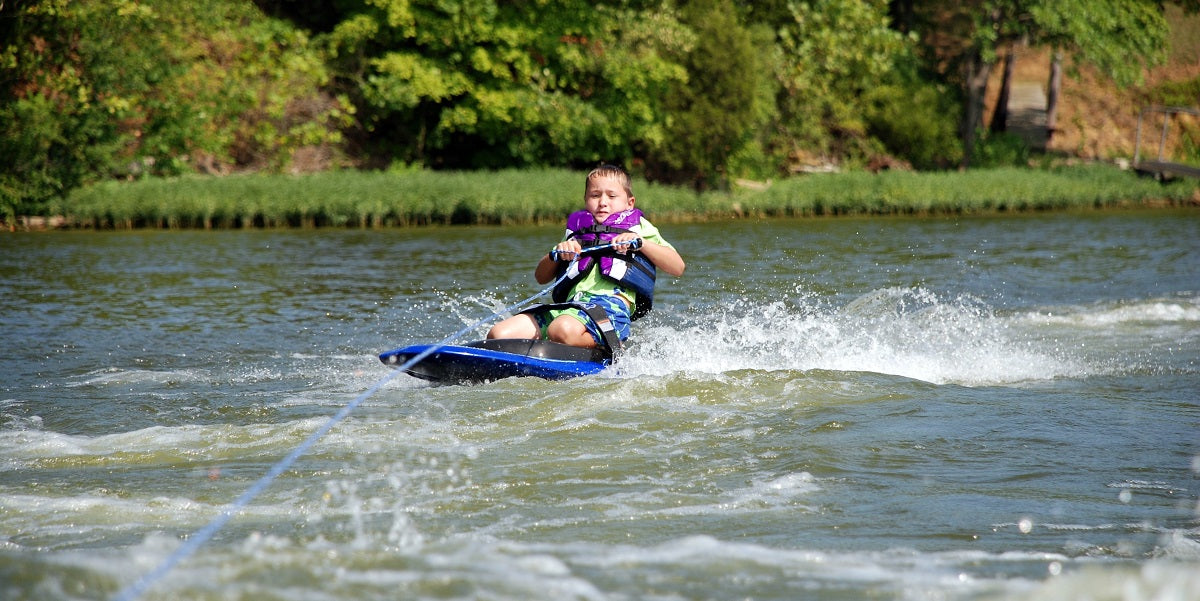
Kneeboarding is a great way for kids to graduate from tubing to riding wakes, but adults can enjoy kneeboarding just as much.
When kneeboarding, riders sit atop a multipurpose board with the knees tucked, while being towed behind a boat. The legs are secured to the board with a single, large strap while the rider holds a standard tow rope.
The rider's center of gravity is closer to the rear of the board; this allows the tip of the board to remain raised above the water when towed, preventing the rider from digging in and falling off.
How to Get Started On a Kneeboard
Getting up and moving is usually the hardest part of any watersport. But compared to wakeboarding and water skiing, getting started on a kneeboard is easy.
1. Start by lying down on the board.
With the board in deep water, lie down on it face-first. Your chest and head should rest close to the front of the board; this will make it easier to tuck your knees onto the board after you get up to speed.
2. Place your arms through the knee strap.
Your arms need to be placed underneath the knee strap. When you begin riding, you'll use your arms to maneuver the strap onto your legs.
3. Grab the tow handle, and get up to speed.
Once you're in position and ready to ride, give the boat a thumb's up -- it's time to get some speed! A speed of 10 MPH is great for beginners.
4. At speed, tuck your knees and sit up.
Wait until you're up to an appropriate speed. Once the board is planing atop the water, tuck your knees and place them atop the board. While tucking your knees, remove your arms from underneath the knee strap, one at a time.
While you reposition, you'll need to temporarily hold the tow handle in one hand. Keep a tight grip.
Tips: Size the straps, wait for speed, find your center of gravity.
Before riding a kneeboard, size up the straps and make sure they're adjusted to properly fit your legs. Test your sitting position, and make sure your shins are resting flat against the top of the board.
Often, new kneeboard riders try to transition to a seated position too quickly, before they've reached a good tow speed. Be patient, and wait until the board is up to speed and stable atop the water.
When you're transitioning from lying to sitting, your center of gravity should be just behind the middle of the board, toward the rear. This will keep the tip of the board raised up and out of the water, preventing you from dipping forward and crashing.
Plenty of kneeboards have molded knee pads fastened to the board. These will help you find a good center of gravity.
Choosing the Right Size Kneeboard
When it comes to kneeboarding, the size of your board doesn't matter much. Sure, there are general guidelines for what's ideal -- based mostly on rider size and weight -- but, generally, any rider can use any board effectively. Reference the chart below for ideal board sizes.
Kneeboard Size Chart
| Rider Weight |
Kneeboard Size |
| Youth or < 150 lbs | 50" - 54" |
| 150 - 179 lbs | 55" - 60" |
| 181 - 209 lbs | 61" - 66" |
| 210 lbs+ | 67"+ |
Types of Kneeboards

Like water skis and wakeboards, kneeboards range in their design and construction, from recreational to competitive profiles. Recreational boards designed for kids and casual riders have to have wide, beveled edges with thick foam cores -- the O'Brian Freeboard V2 is a great example.

Competitive kneeboards (like the O'Brien Enforcer) have thinner profiles, with stiffer cores and more acute bevels that facilitate carving and performing tricks. Competitive boards also tend to be narrower and shorter. This design requires greater speed, but it affords more control.
Kneeboard Tow Speed
Like all towed watersports, boat speed plays a key role in the rider's experience. New and youth riders should start out with a tow speed of 10 to 15 miles per hour. Kneeboards provide plenty of bouyancy, so relatively slow speeds are required to maintain good momentum and lift.
Experienced and adult riders can enjoy a faster pace. Speeds of 17 to 20 miles per hour is optimal for deep carving and popping off wakes.
Kneeboard Straps: Necessary or Not?
At lower speeds, a strap is not necessary to maintain a good riding position. Even at higher speeds, a kneeboard strap is only needed when getting airborne -- that way, the board doesn't come out from under the rider while in the air.
Beginner riders can make use of a tow strap, but not wearing one will make resetting and learning to transition to a seated position easier.
Ready to start riding? Check out our selection of kneeboards!



